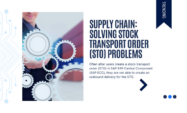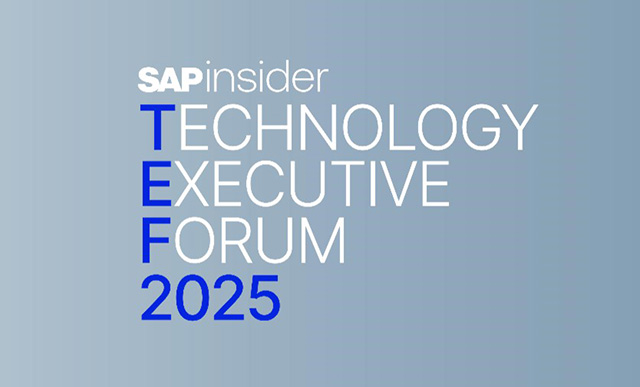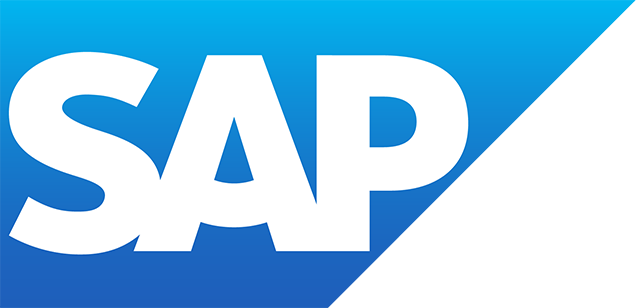SAP MM
Filter By
Browse By
- SAP Analytics and AI
- SAP Application Development and Integration
- All SAP Application Development and Integration
- SAP ABAP
- SAP ABAP Development Tools
- SAP ABAP Test Cockpit
- SAP API Management
- SAP BAPI
- SAP Basis
- SAP BRF
- SAP Business Application Studio
- SAP CMS
- SAP Design Studio
- SAP Development Tools
- SAP DevOps
- SAP EAI
- SAP EDI
- SAP Extension Suite
- SAP Fiori
- SAP Fiori Elements
- SAP Integration Suite
- SAP Low Code Application Development
- SAP Low Code Automation
- SAP Netweaver
- SAP Release Management
- SAP UI5
- SAP Web Application Server
- SAP Web IDE
- SAP Business Process Management
- SAP Center of Excellence
- SAP CIO
- SAP Customer Experience
- SAP Data and Data Management
- All SAP Data and Data Management
- SAP BW
- SAP BW/4HANA
- SAP Crystal Reports
- SAP Data Archiving
- SAP Data Center
- SAP Data Governance
- SAP Data Integration
- SAP Data Migration
- SAP Data Quality
- SAP Data Services
- SAP Data Strategy
- SAP Data Visualization
- SAP Data Warehouse Cloud
- SAP DMS
- SAP Document Control
- SAP EIM
- SAP ETL
- SAP ETL Tools
- SAP HANA
- SAP HANA Administration
- SAP HANA Deployment Infrastructure
- SAP HANA Studio
- SAP Master Data
- SAP Master Data Governance
- SAP MDM
- SAP Enterprise Architect
- SAP Enterprise Asset Management
- SAP ERP
- SAP Finance
- All SAP Finance
- SAP Accounting
- SAP AR AP
- SAP Asset Accounting
- SAP Billing Systems
- SAP BPC
- SAP BRIM
- SAP Cash Management
- SAP Central Finance
- SAP Controlling
- SAP COPA
- SAP Cost Center Accounting
- SAP Currency Risk
- SAP e-invoicing
- SAP FICO
- SAP Finance Automation
- SAP Advanced Financial Closing
- SAP Financial Consolidation
- SAP Financial Planning
- SAP FX Risk
- SAP General Ledger
- SAP Global Tax Management
- SAP Hyperion
- SAP Order to Cash
- SAP Payment Processing
- SAP Profitability Analysis
- SAP Rebate Management
- SAP S/4HANA Finance
- SAP SWIFT Compliance
- SAP Treasury Management
- SAP Universal Journal
- SAP Governance Risk and Compliance
- SAP Human Capital Management
- SAP Intelligent Technologies
- SAP Platform and Technology
- All SAP Platform and Technology
- SAP Business Technology Platform
- SAP Cloud
- SAP Cloud Connector
- SAP Cloud Integration Platform
- SAP Cloud Migration
- SAP Cloud Platform
- SAP Cloud Providers
- SAP Cloud Strategy
- SAP Digital Signature
- SAP Container Platform
- SAP HANA Enterprise Cloud
- SAP Digital Asset Management
- SAP Smart Forms
- SAP HEC
- SAP Digital Integration Hub
- SAP Hyperscalers
- SAP Infrastructure
- SAP Messaging
- SAP Quality and Testing
- SAP Security
- SAP Spend Management
- SAP Supply Chain Management
- All SAP Supply Chain Management
- SAP APO
- SAP Asset Management
- SAP Business Network
- SAP Digital Manufacturing Cloud
- SAP Digital Twin
- SAP EWM
- SAP IBP
- SAP Inventory Management
- SAP Label Printing
- SAP Logistics
- SAP Manufacturing
- SAP Manufacturing Automation
- SAP MES
- SAP MII
- SAP MM
- SAP MRO
- SAP MRP
- SAP Order Management
- SAP Plant Maintenance
- SAP PLM
- SAP Production Planning
- SAP S&OP
- SAP SD
- SAP SPM
- SAP Supply Chain Planning
- SAP Track and Trace
- SAP Transportation Management
- SAP System Administration
Supply Chain Management: SAP MM
Customers need companies to deliver what is offered. Thus, organizations need to make sure materials are always kept in proper quantities and without shortages or gaps in the supply chain. One way an organization can easily meet its business demands is with the help of SAP.
What Is SAP MM?
SAP Materials Management (MM) module is an SAP ERP component that helps organizations with materials management, inventory management, and warehousing. It is one of the most important modules of SAP ERP because it supports procurement and inventory management for day-to-day operations. An organizational master data structure of plant, valuation area, storage location, purchasing organizations, and purchasing groups supports basic transactions.
Supply Chain Management: SAP MM
Customers need companies to deliver what is offered. Thus, organizations need to make sure materials are always kept in proper quantities and without shortages or gaps in the supply chain. One way an organization can easily meet its business demands is with the help of SAP.
What Is SAP MM?
SAP Materials Management (MM) module is an SAP ERP component that helps organizations with materials management, inventory management, and warehousing. It is one of the most important modules of SAP ERP because it supports procurement and inventory management for day-to-day operations. An organizational master data structure of plant, valuation area, storage location, purchasing organizations, and purchasing groups supports basic transactions.
Key capabilities include:
- Material management
- Procurement process management
- Master data management
- Inventory management
- Material requirements planning
- Invoice verification
Master data is the foundation for all transactions within SAP MM. It has two important components — material and vendor. Creating solid master data is the key to reducing repetitive work and minimizing errors. Some examples of master data are material master, service master, vendor master, purchasing info record, source lists, and quotas.
Advantages of SAP MM:
- Minimizes the cost of operations
- Reduces inventory losses
- Activities lead to a smoother and efficient process
Mitigate your risks by:
- Tracking the data
- Increase your sales
- Stock balancing
- Promote the products to help move inventory
- Offer customer discounts to help move inventory
It is important to note that with SAP S/4HANA and SAP MM, there are several functionalities that have changed. In SAP S/4HANA, the Material Ledger function is mandatory to support flexible valuation methods in multiple currencies. Post Goods Receipt against the Inbound Delivery is a feature of the SAP Fiori app. It has ability to search by Inbound Delivery and other attributes. The Fiori app allows for a better user experience, improved performance, and less load on databases.
Further Insights for SAPinsiders
- How to Create a Global Template to Configure SAP MM Processes in Implementations and Rollouts. S. Baraneedharan, an SAP Consulting Expert, explains the steps involved in creating a template for configuring an SAP materials management (MM) process.
- Improve Current Forecast Models in SAP MM. Gaetano Altavilla, Associate Professor of Economic Policy at the University of Naples, shares in his article how to improve your forecast accuracy by placing weights on individual forecasts. It also explores the idea of combining forecasting models.
- Understanding the Key Aspect of Supply Chain Visibility. Kumar Singh, SAPinsider Research Director, describes supply chain visibility, how organizations struggle achieving it, and one method to kickstart your approach.
10 results
-

- SAP MM
 Premium
Premium
Critical Role of Manufacturing Execution Systems (MES)
Reading time: 3 mins
As supply chain challenges increase due to increasing supply chain complexities, organizations are increasingly looking at leveraging data and analytics tools and technologies to help them address their supply chain challenges. Manufacturing plays a crucial role in supply chain networks, and recent events have emphasized its importance in building supply chain resiliency and agility. This has…
-

Role of Data Quality in Supply Chain Digital Transformation
Reading time: 7 mins
Quality Data Lays the Foundation As supply chains become increasingly complex, so does the associated data landscape. Millions of data points must be managed in modern supply chains today due to the wide gamut of systems used. From Enterprise resource planning (ERP) systems that manage an organization’s basic processes to customer relationship process (CRM) systems...…
-

- SAP MM
 Premium
Premium
Learn how Coca-Cola Hellenic Bottling Company Reduced SAP Product Launch Cycles by 56%
Before implementing a cohesive automation solution for its SAP launch processes, Coca-Cola Hellenic Bottling Company needed to maintain disparate legacy solutions, some of which could not be updated to meet changing business needs. This situation slowed down product launches and made it difficult for business teams to get visibility into launch status. These factors, along…
-
-

- SAP MM
 Premium
Premium
Logistics and SCM: Case study: Filling the gap: How A.O. Smith uses pre-structured SAP tools to accelerate material extensions and improve data quality
Reading time: 1 mins
Learn how A.O. Smith applied process automation techniques and a pre-structured set of SAP tools to overcome the challenge of extending a large number of materials to multiple plants and warehouses simultaneously and accurately through an intelligent rules-driven process. SCM2017_Gabor_Casestudyfillingthegap Stephen Gabor If you have comments about this article or publication, or would like to...…
-

- SAP MM
 Premium
Premium
Benjamin Moore Mixes Up Its Product Pricing
Reading time: 8 mins
In 2014 Benjamin Moore & Co. found itself limited by an aging legacy pricing system that stymied its ability to scale its paint and stain manufacturing business. It turned to Vistex for a new automated pricing system that transformed the pricing process, leading to more accuracy, better analytics, and increased customer satisfaction. Now it is…
-

Supply Chain: Solving Stock Transport Order (STO) Problems
Reading time: 12 mins
A common challenge experienced by users in the supply chain functions of a business who create stock transport orders (STO) in SAP ERP Central Component (SAP ECC) is that once they have done so, they are not able to create an outbound delivery for the STO. These problems are common to all types of STO…
-

- SAP MM
 Premium
Premium
Improve Your Company’s Production Efficiency with SAP Active Ingredient Management
Reading time: 19 mins
Learn about the Active Ingredient Management processes using SAP Materials Management, Production Planning, and Financial Accounting modules. Get details about the main customizing settings to be done in the system from a financial point of view. Key Concept Active Ingredient Management affects all of a company’s business processes that contain at least one concentrate or...…
-
-

- SAP MM
 Premium
Premium
How to Configure and Implement Global Percentage Bidding for External Service Procurement
Reading time: 20 mins
Learn how global percentage bidding (GPB) is configured and implemented to accelerate the management of service specifications for external service procurement. Discover how this functionality reduces the time and cost of procurement in organizations. Key Concept Global percentage bidding (GPB) is a request for quotation document type in an SAP system that is used to...…
-

- SAP MM
 Premium
Premium
Configuration Tips for Using Automated Flexible Product Prices with SAP Pricing Scale
Reading time: 27 mins
Learn how to gain market share by configuring and implementing SAP pricing scale with different automated flexible price strategies and appropriate business scenarios. Key Concept Organizations have requirements to implement automated scalable price models that can enable them to respond competitively to their customers and prospective customers’ purchasing power. SAP has provided some functionalities such...…
-

- SAP MM
 Premium
Premium
Get Optimal Service Performance from Vendors Using Vendor Evaluation for External Services
Reading time: 26 mins
Learn how the Vendor Evaluation functionality for external service vendor appraisal can give optimal service delivery. This functionality helps organizations mitigate poor service delivery and uncover and remove unnecessary costs. Key Concept It is important for an organization to measure from time to time the performance of vendors that provide external services. This measurement provides...…
Become a Member
Unlimited access to thousands of resources for SAP-specific expertise that can only be found here.
Become a Partner
Access exclusive SAP insights, expert marketing strategies, and high-value services including research reports, webinars, and buyers' guides, all designed to boost your campaign ROI by up to 50% within the SAP ecosystem.
Upcoming Events
-

SAPinsider Technology Executive Forum
December 02 - 03, 2025
Phoenix, Arizona
United States
View Event
Related Vendors
Your request has been successfully sent


